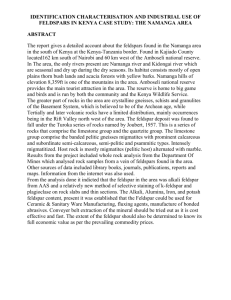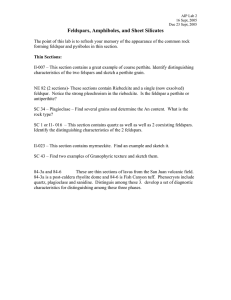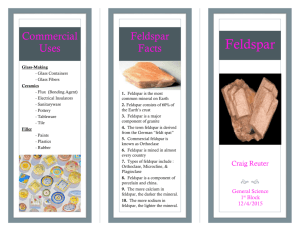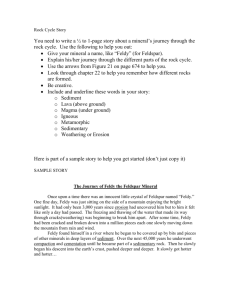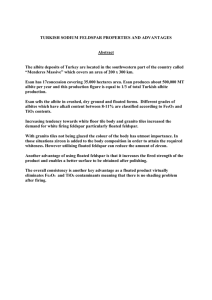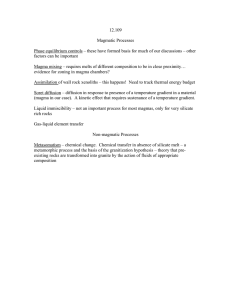occurrence, classification and economic importance of feldspars in
advertisement
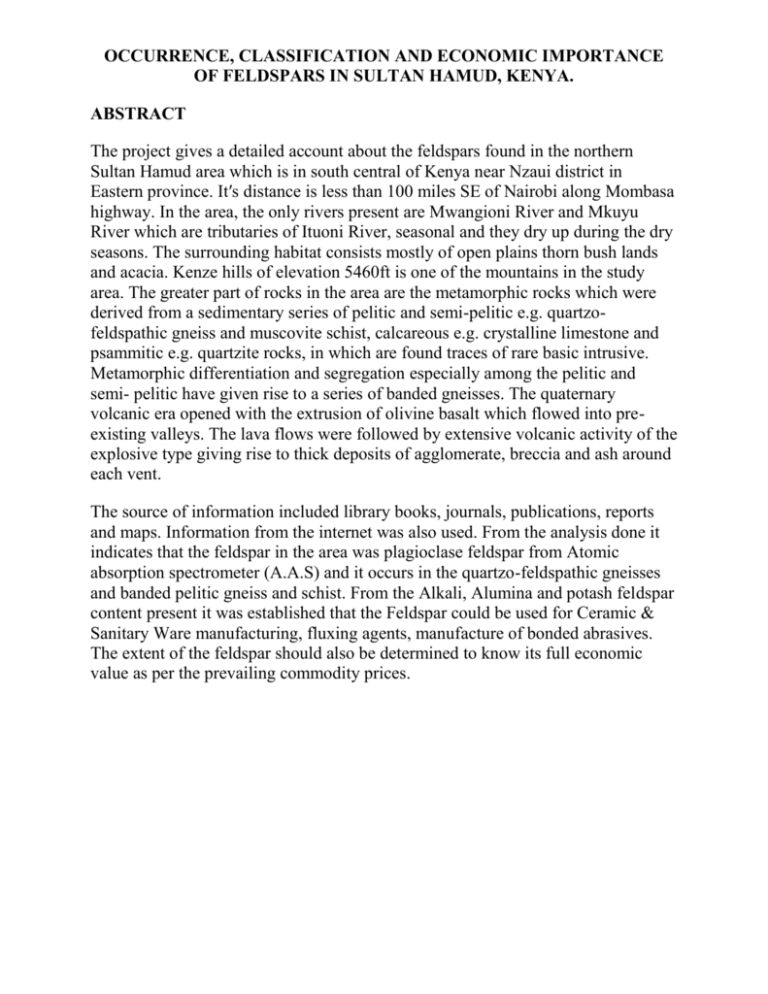
OCCURRENCE, CLASSIFICATION AND ECONOMIC IMPORTANCE OF FELDSPARS IN SULTAN HAMUD, KENYA. ABSTRACT The project gives a detailed account about the feldspars found in the northern Sultan Hamud area which is in south central of Kenya near Nzaui district in Eastern province. It′s distance is less than 100 miles SE of Nairobi along Mombasa highway. In the area, the only rivers present are Mwangioni River and Mkuyu River which are tributaries of Ituoni River, seasonal and they dry up during the dry seasons. The surrounding habitat consists mostly of open plains thorn bush lands and acacia. Kenze hills of elevation 5460ft is one of the mountains in the study area. The greater part of rocks in the area are the metamorphic rocks which were derived from a sedimentary series of pelitic and semi-pelitic e.g. quartzofeldspathic gneiss and muscovite schist, calcareous e.g. crystalline limestone and psammitic e.g. quartzite rocks, in which are found traces of rare basic intrusive. Metamorphic differentiation and segregation especially among the pelitic and semi- pelitic have given rise to a series of banded gneisses. The quaternary volcanic era opened with the extrusion of olivine basalt which flowed into preexisting valleys. The lava flows were followed by extensive volcanic activity of the explosive type giving rise to thick deposits of agglomerate, breccia and ash around each vent. The source of information included library books, journals, publications, reports and maps. Information from the internet was also used. From the analysis done it indicates that the feldspar in the area was plagioclase feldspar from Atomic absorption spectrometer (A.A.S) and it occurs in the quartzo-feldspathic gneisses and banded pelitic gneiss and schist. From the Alkali, Alumina and potash feldspar content present it was established that the Feldspar could be used for Ceramic & Sanitary Ware manufacturing, fluxing agents, manufacture of bonded abrasives. The extent of the feldspar should also be determined to know its full economic value as per the prevailing commodity prices.
